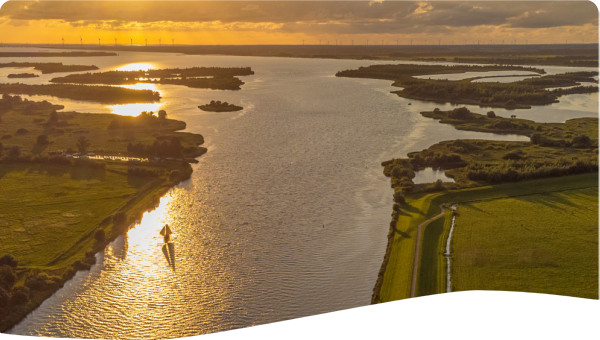In Central Asia, water is unevenly distributed with states positioned downstream being placed in a very unfavourable position. The situation is further complicated since the benefits from cooperation are highly asymmetrical. Despite the challenge, the states have taken action and entered into a regional agreement, which attracted the international donor community to engage further. This case illustrates how international initiatives can influence institutional arrangements in transboundary basins.
During the Soviet period, the Aral Sea Basin was managed as an integrated economic unit. Economic priorities, defined by Moscow, dictated that water was allocated to optimise agricultural production and provision of hydroelectricity was a second priority. With independence the integrated economic system broke down. Each country began to redefine its own economic priorities. They became acutely aware of their resource inputs and outputs and it became evident that their respective goals conflicted regarding water usage (by volume and by schedule). Uzbekistan and Turkmenistan wanted to intensify agricultural production for which they were heavily dependent on water for irrigation. Yet, the majority of the water sources originated outside their borders. Kyrgyzstan and Tajikistan, meanwhile, would like to utilize water for electricity production and also expansion of agriculture. The scene was set for intense competition.The potential conflicts were most pronounced for the populations living furthest downstream, especially Karakalpakstan and Kzyl Orda. Here the water was of very low quality consisting mainly of polluted drainage water that had been returned to the river.
These populations had – and still have – little bargaining leverage over upstream users (agriculture users at midstream and hydropower users further upstream) because they lacked any resources needed by the upstream users.
Midstream users were in better bargaining positions. Turkmenistan and Uzbekistan (and partially Kazakhstan) primarily needed water for agricultural production. The challenge was to keep water flowing from further upstream. Each of these three countries has large reserves of natural gas.
In sum, the benefits from cooperation were highly asymmetrical and unevenly distributed. It is largely due to the leadership of the water authorities from five countries and the support from the international community that major conflict did not erupt after independence.
In February 1992, the five countries entered into agreement on Cooperation in the Joint Use and Protection of Water Resources of Interstate Significance, affirming the “existing structure and principles of allocation” of transboundary waters.
By signing this agreement, the Central Asian states pledged “strictly to observe the coordinated procedures and established rules on use and protection of water resources,” while recognising the Aral Sea as of common interest to the five countries.
The agreement also formed an Interstate Commission for Water Coordination (ICWC), which subsumed the two existing basin water organisations, and was authorised to determine annual water consumption limits in accordance with actual water availability.
The following year the Interstate Council on the Aral Sea (ICAS) and the International Fund for Saving the Aral Sea (IFAS) were formed. Voicing and providing support, the international donor community soon endorsed this emerging institutional framework that comprised ICAS, IFAS, ICWC and associated organisations.
This case study reviews how international initiatives influenced institutional arrangements in transboundary basin, where newly established independent states tackle economic, environmental and social problems. The study also discusses the main shortcomings of institution building; these include the lack of political commitment, lack of clear mandates, responsibilities and accountabilities of main actors, and lack of proper coordination of international grant programs.
The history of water management and disputes in Central Asia is the history of institutions. Some, like BWOs Amudarya and Syrdarya have been established in Soviet times on a river basin principle and still are carrying out operational functions of the water management. Some, like ICWC emerged immediately after the collapse of the union as an attempt to substitute federal water management (policy) authority. Each country has established its own system of water management and over the years developed its own institutions that should carry out water management in the country and promote national interests in discussions with other countries of the region. Institutional and water governance systems of the other states are more or less similar, though would differ from each other with the names of the institutions, their subordination to the governmental authorities and mandates, level of influence, etc. E.g. WUA that are very well developed in Kyrgyz Republic and have an important role in settlement of local water related disputes are not that strong in Uzbekistan and Tajikistan yet and exist in Turkmenistan and Kazakhstan in different format.
The Central Asian states didn't realize interdependencies of the Soviet Union could be used to foster mutual cooperation. Previously, Aral Sea crisis was regarded a water problem, rather an opportunity for collaboration and economic development by trading energy for water.
As a result of the individual pursuit of self-sufficiency in water and energy, the countries have invested in costly solutions instead of adhering to the mutual interdependence of the water and energy systems.
External actors have not maintained clear and consistent objectives. Economic and strategic objectives often run counter to policies that encourage collective regional behaviour. As a result, Central Asian states are sceptical about foreign involvement in water management.
 Case studies
Case studies